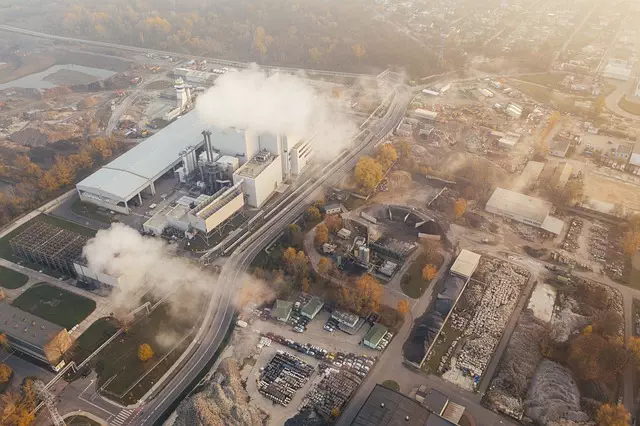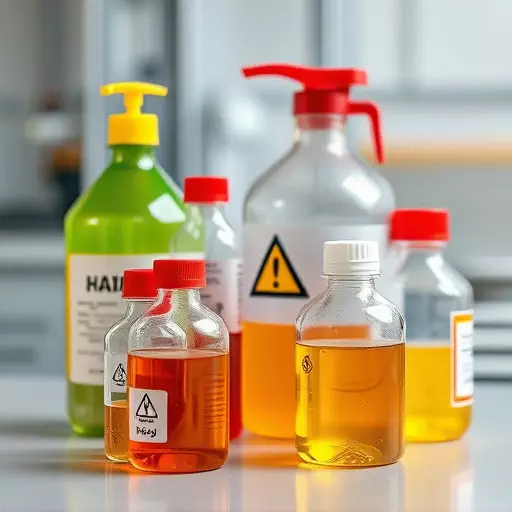Chemical spills require tailored emergency responses centered around hazardous material identification, understanding specific chemical properties, and implementing industrial hygiene protocols. This involves reviewing Material Safety Data Sheets (MSDS/SDS), employee training, donning suitable personal protective equipment (PPE), and developing comprehensive incident response plans. Effective containment, decontamination, and post-incident reviews further mitigate chemical exposure risk and safeguard public welfare while minimizing environmental damage.
In an industrial setting, chemical spills pose significant risks to workers and the environment. Effective emergency response is crucial for minimizing exposure, preventing accidents, and mitigating potential hazards. This article delves into comprehensive strategies for managing chemical exposure risk, focusing on key aspects such as hazardous material identification, implementing industrial hygiene protocols, and planning efficient containment and cleanup techniques. By exploring these essential elements, organizations can enhance their preparedness and ensure a swift, safe response to any chemical spill incident.
- Understanding Chemical Spills: Types and Potential Hazards
- Hazardous Material Identification: Knowing Your Risks
- Implementing Industrial Hygiene Protocols for Safety
- Emergency Response Planning: A Step-by-Step Guide
- Personal Protective Equipment (PPE): Essential Tools for Protection
- Containment and Cleanup Techniques for Efficient De-escalation
- Post-Incident Review: Learning from Experience for Better Preparedness
Understanding Chemical Spills: Types and Potential Hazards
Chemical spills can range from minor incidents to major disasters, each presenting unique challenges and risks. Understanding the nature of these events is paramount in effective emergency response. Different types of chemicals pose varying levels of danger, from acute toxicity to long-term health effects. Industrial hygiene protocols and hazard identification are key steps in mitigating chemical exposure risk management.
Identifying hazardous materials involves understanding their physical and chemical properties. This includes knowing the material’s potential for corrosion, flammability, reactivity, and its toxicological profile. Proper labeling and documentation are crucial aspects of industrial safety practices. By adhering to these protocols, emergency responders can efficiently assess the situation, don appropriate personal protective equipment, and implement containment strategies to minimize environmental impact and ensure public safety.
Hazardous Material Identification: Knowing Your Risks
Understanding and identifying hazardous materials is a critical step in managing chemical exposure risks. Before any emergency response, it’s crucial to have a comprehensive understanding of the substances present at a facility or worksite. This involves reviewing Material Safety Data Sheets (MSDS) or Safety Data Sheets (SDS), which provide essential information about the properties, potential hazards, and necessary precautions for handling various chemicals.
Industrial hygiene protocols demand that employees be trained to recognize these hazards and understand the specific risks associated with their work. Effective hazardous material identification enables quick decision-making during an emergency, ensuring that response teams are prepared to contain and mitigate the spill using appropriate personal protective equipment (PPE) and decontamination methods while minimizing further exposure and environmental impact.
Implementing Industrial Hygiene Protocols for Safety
Implementing Industrial Hygiene Protocols for Safety is an essential step in mitigating risks associated with chemical spills. These protocols focus on identifying and managing hazardous materials, ensuring workers’ well-being, and minimizing environmental impact. By integrating industrial hygiene practices, organizations can effectively assess and control potential exposure risks. Regular training sessions, proper personal protective equipment (PPE), and efficient ventilation systems are key components of these strategies.
The process begins with thorough hazardous material identification, where professionals scan and categorize substances based on their characteristics and risks. This information is then used to develop tailored safety measures. Well-defined industrial hygiene protocols help establish clear guidelines for incident response, evacuation procedures, decontamination techniques, and medical surveillance for affected personnel. These measures collectively contribute to a proactive approach in managing chemical spills, prioritizing the safety of workers and communities.
Emergency Response Planning: A Step-by-Step Guide
Emergency Response Planning is a crucial aspect of chemical spill management, aimed at minimizing risks and ensuring effective hazard control. The process begins with hazardous material identification, where facilities thoroughly assess and document all hazardous substances present on-site. This step is vital for understanding potential risks and implementing appropriate safety measures.
Following identification, organizations should develop comprehensive industrial hygiene protocols tailored to specific chemicals. These protocols outline emergency response procedures, including evacuation plans, personal protective equipment (PPE) guidelines, and decontamination strategies. Regular drills and training sessions are essential to familiarize staff with these protocols, ensuring they can act swiftly and efficiently in case of a chemical spill, thereby mitigating chemical exposure risk management.
Personal Protective Equipment (PPE): Essential Tools for Protection
Personal Protective Equipment (PPE) is an indispensable component of effective emergency response for chemical spills, serving as a critical line of defense against potential health hazards. It plays a pivotal role in chemical exposure risk management by creating a barrier between responders and harmful substances. PPE includes specialized clothing, respirators, eye protection, gloves, and boots designed to prevent direct contact or inhalation of toxic chemicals.
Proper use of PPE is essential for maintaining industrial hygiene protocols during spill cleanup operations. Each piece of equipment is tailored to address specific hazards associated with different types of hazardous materials. For instance, a chemical identifier guide can help emergency responders quickly determine the nature of the spill and select appropriate PPE. Effective hazard communication and training ensure that responders are equipped with knowledge about potential risks and the correct use of PPE, fostering a safer working environment.
Containment and Cleanup Techniques for Efficient De-escalation
Effective containment and cleanup are pivotal in de-escalating situations involving chemical spills. The initial step is to identify the hazardous material, utilizing industry-standard protocols for hazardously identifying substances. This crucial process aids in assessing the risks associated with the spill and deploying appropriate response strategies.
Once the substance is identified, containment measures should be swiftly implemented. Depending on the nature of the chemical, this could involve setting up barriers, absorbing the liquid with inert materials, or employing specialized containment systems. Following containment, a thorough cleanup procedure commences, adhering to established industrial hygiene protocols to mitigate any potential exposure risks. This meticulous process ensures that not only is the immediate area decontaminated but also that any residual chemicals are safely disposed of, preventing further contamination and minimizing environmental impact.
Post-Incident Review: Learning from Experience for Better Preparedness
After any chemical spill incident, a thorough post-incident review is essential for improving emergency response and risk management strategies. This process involves evaluating every step taken during the crisis, from initial detection to containment and decontamination. By examining what worked well and identifying areas for improvement, organizations can enhance their industrial hygiene protocols and overall preparedness.
The review should focus on various aspects such as hazardous material identification, employee training, equipment functionality, and communication protocols. Analyzing these elements enables teams to refine their emergency response plans, ensuring a more efficient and effective reaction to future chemical exposure risks. This continuous learning approach is vital for maintaining a safe working environment and minimizing potential environmental impacts.


